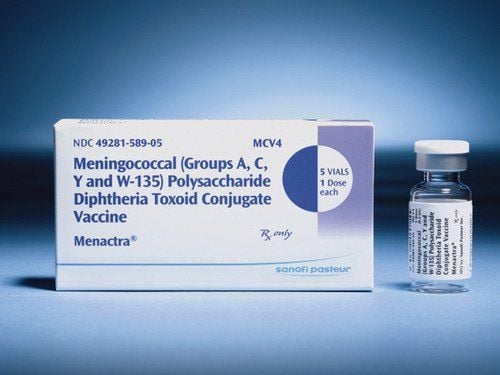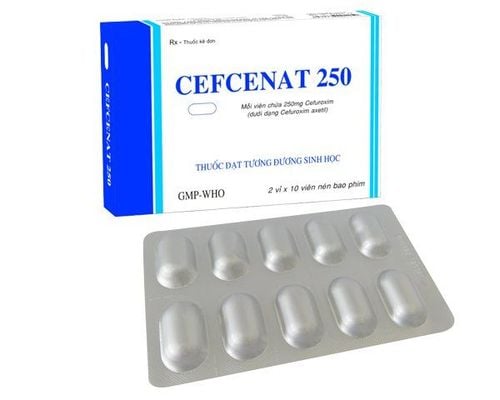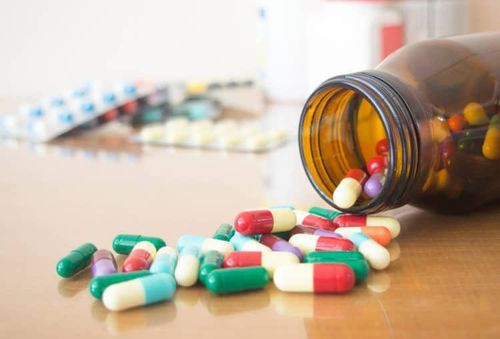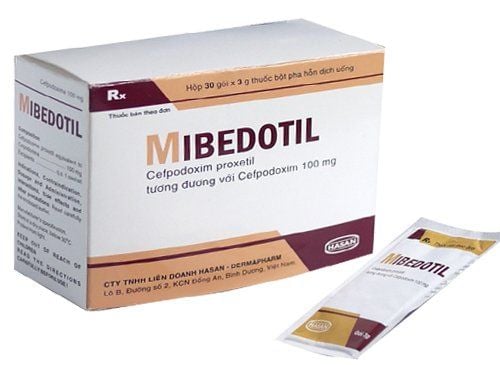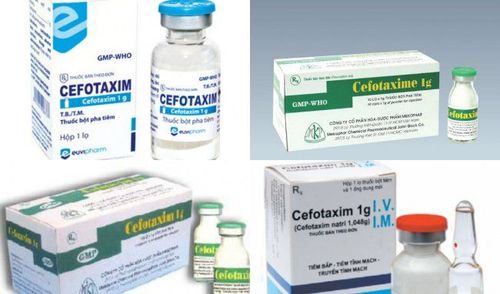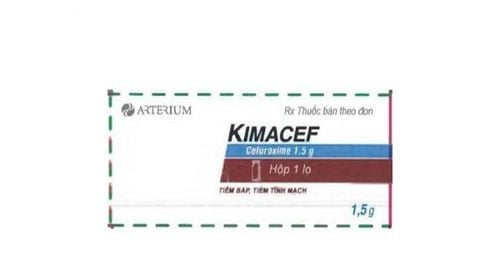This is an automatically translated article.
Tinadro is a prescription medicine containing Cefuroxime, which is used to treat severe lower respiratory tract infections, bacteremia and meningitis caused by susceptible bacteria. Learn more about Tinadro through the article below.
1. What is Tinadro?
Tinadro is a prescription medicine used to treat severe infections of the lower respiratory tract, skin and soft tissue infections, bacteremia and meningitis caused by susceptible bacteria.Tinadro is prepared in the form of a powder for injection. Packaged in a box of 10 bottles. Each vial contains the active ingredient Cefuroxime sodium equivalent to Cefuroxime 1.5g.
2. What does Tinadro do?
Tinadro medicine has the main ingredient is Cefuroxime, this active ingredient is a semi-synthetic broad-spectrum antibiotic, belonging to the Cephalosporin group. Has antibacterial activity due to inhibition of bacterial cell wall synthesis by binding to penicillin-binding proteins.
Antibacterial spectrum: Cefuroxime has effective antibacterial activity on a broad spectrum, including beta-lactamase/cephalosporinase strains of both Gram-positive (+) and Gram-negative (-) bacteria.
Indications for Tinadro:
Tinadro is indicated for treatment in the following cases:
Severe bacterial infections of the lower respiratory tract, including pneumonia. Skin and soft tissue infections. Bone and joint infections. Severe infections of the urinary tract - genitourinary. Sepsis and meningitis caused by susceptible strains of bacteria. Treatment in the prevention of infection during surgery.
3. How to use Tinadro:
3.1. How to use Tinadro: For Tinadro, patients use it by injection or intravenous infusion. Cephalosporin injections should only be used in severe or complicated infections. It can be given by deep intramuscular injection (for 750mg doses), intravenous infusion or slow intravenous injection over 3 to 5 minutes.
3.2. Dosage of Tinadro: The recommended dosage of Tinadro for each subject is as follows:
Adults: The recommended dose is 750mg/time, injected every 8 hours, in more severe infections the dose may be increased. dose up to 1.5g / time, 8 or 6 hours injection once. Children and very young children: The recommended dose is 30mg - 60mg/kg/day, if necessary it can be increased to 100mg/kg/day, divided into 3 or 4 small doses. Newborns can be given the same total daily dose, but divided into 2 or 3 smaller doses. Patients with renal impairment: Consider dose reduction. When creatinine clearance is in the range of 10-20ml/min, the dose is 750mg every 12 hours. When creatinine clearance is less than 10ml/min, give 750mg once daily. Patients on hemodialysis, dose 750mg at the end of each dialysis. Patients undergoing periodic peritoneal dialysis and periodic arterial - venous dialysis, dose 750mg, twice daily. Patients with meningitis caused by susceptible strains of bacteria: Adults recommend intravenous dose of 3g, every 8 hours; In young children intravenously at a dose of 200-240 mg/kg/day, divided into 3 or 4 small doses. Gonorrhea: Use a single dose of 1.5g. Divided into 2 doses of 750mg and injected into different sites. 3.3. How to deal with forgetting, overdose Overdose:
When overdosing Tinadro , most drugs only cause nausea, vomiting or diarrhea. However, some cases may cause neuromuscular hyperexcitability reactions and convulsions, especially in patients with impaired renal function.
Treatment of overdose:
When an overdose of Tinadro is suspected, if convulsions develop, stop taking the drug; Use anticonvulsant therapy when clinically indicated. Protect the patient's respiratory tract, support ventilation and infusion. Treatment may be supportive or symptomatic with hemodialysis.
3.4. Tinadro is contraindicated in the following cases:
Patients with hypersensitivity to the active ingredient Cefuroxime, a history of allergy to Cephalosporin antibiotics or any of its ingredients .
4. Notes when using Tinadro
Precautions when using Tinadro:
Carefully investigate the patient's history of allergy to Cephalosporin antibiotics, penicillin before starting treatment with Cefuroxime. Cross-hypersensitivity reactions (including anaphylaxis) may occur at a low rate in patients allergic to beta-lactam antibiotics, so caution must be exercised. To avoid adverse effects on renal function, caution should be exercised when Cefuroxime is co-administered with potent diuretics. For patients with temporary or chronic renal impairment: Consider an appropriate dose reduction. For pregnant women: Tinadro should only be used during pregnancy if absolutely necessary. Lactation: Cefuroxime is excreted in human milk at low concentrations. Can be used if necessary, but should be concerned if the child has diarrhea, thrush and rash. Long-term use of Cefuroxime may result in overgrowth of susceptible strains. Monitor the patient carefully, if serious superinfection occurs, the drug must be discontinued. Use extreme caution when prescribing broad-spectrum antibiotics to people with gastrointestinal disease, especially colitis. Side effects when using Tinadro:
When using Tinadro, you may encounter unwanted side effects classified by frequency as follows:
Common:
Body as a whole: Local pain and Thrombophlebitis at the infusion site. Digestion: Diarrhea. Skin: Skin rash. Uncommon:
Systemic: Candida infection. Blood: Eosinophilia, neutropenia, positive Coombs test. Skin: Urticaria, itching. Gastrointestinal: Nausea, vomiting. Rare:
Body as a whole: Fever. Gastrointestinal: Pseudomembranous colitis. Blood: Hemolytic hemolysis. Skin: Stevens-Johnson syndrome, erythema. Liver: Cholestatic jaundice. Renal: Nephrotoxicity with a transient increase in blood urea nitrogen. Central nervous system: Convulsions (for patients using high doses and renal failure), headache, agitation. Other parts: Joint pain. Tinadro drug interactions and incompatibilities:
There are records of increased nephrotoxicity when concomitant use of aminoglycoside antibiotics and Cephalosporin.
Use of high doses of Probenecid reduces the renal clearance of Cefuroxime, resulting in higher and more prolonged plasma concentrations of Cefuroxime.
Cefuroxime should not be diluted with sodium bicarbonate injection.
Preservation of Tinadro.:
Vial of powder for injection: Store the drug in a tightly closed package, at a temperature below 30°C, avoid direct sunlight, avoid moisture, and store in a cool and dry place.
Above is all the necessary information when using Tinadro. Tinadro is a prescription drug, the patient needs the permission to use the drug from the treating doctor.
Please dial HOTLINE for more information or register for an appointment HERE. Download MyVinmec app to make appointments faster and to manage your bookings easily.




